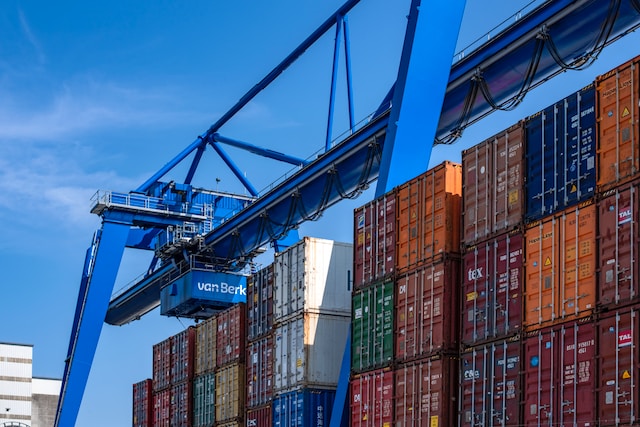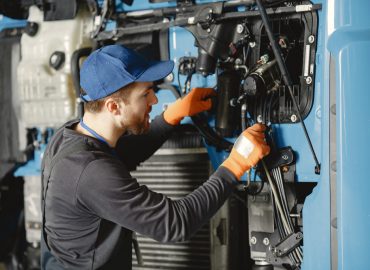Safety regulations regarding crane usage are critical to protecting employee well-being and equipment integrity. Therefore, employees should receive training on how to work around cranes safely, adhere to lift limits, and remain at an appropriate distance from any loaded equipment.
Safety planning every job before beginning is also of the utmost importance, which includes understanding its load, and capacity and devising an efficient path to take it where it must go.

Preparation
Cranes are feats of engineering, yet they can also be dangerous if mishandled. However, by crane and any crew working around it will remain safe by taking simple precautions.
Preparing for a lift begins by clearing away potential hazards in the area around your load, such as powerlines that could be hit by a crane or equipment, as well as making sure the crane path to and from your bag is clear of obstructions such as fences, equipment, dirt piles and any other impediments to moving it safely.
An inspection should also ensure the crane is prepared to lift, including checking that its hoist limit switch, anti-two block and capacity limits are set appropriately for each load to be lifted. A visual check of sheaves to ensure they are correctly seated, and to check for twisting or kinking in wire rope, is essential. Safety systems checks such as the telescoping jib, outriggers and labelling must also be completed as crucial steps towards lifting safely.
Training
Overhead crane operators and anyone working on sites with overhead cranes (signal persons and engineers, for instance) must receive proper training on using this equipment safely. This applies directly to them as operators and all employees working around overhead cranes (signal persons & engineers included).
Training should focus on efficiently and safely planning a job before crane operations commence, including identifying potential hazards such as overhead obstructions. Furthermore, knowing how to inspect equipment for electrical hazards – cranes may cause electrocutions when coming into contact with power lines; to prevent this from happening, keeping a minimum approach distance and de-energising any rigging before lifting should be used as preventative measures.
Employees should also receive training on how weather changes impact crane operations and when it is safe or unsafe to continue lifting operations. Finally, employees must understand how to securely attach loads during transport, as this can prevent accidental drops that cause severe injury or even fatality.

Planning
Crane accidents can be hazardous, resulting in severe injury or fatality. They also damage equipment and harm an organisation’s reputation.
Many crane accidents result from operators overloading a crane beyond its capabilities, subjecting its structure to significant strain and risking irreparable damage; additionally, this may cause an unexpected drop of loads onto other people in the work zone resulting in serious injuries.
Planning includes inspecting ground conditions and assessing whether the location suits a crane. Workers should also be wary of permanent hazards that cannot be moved, such as powerlines, and maintain a safe distance between themselves and such powerlines, as contact between overhead powerlines remains one of the leading causes of crane accidents.
Emergency Response
Cranes are vital machinery construction crews use to lift and move heavy loads across job sites. Still, they can also pose severe threats if misused and should continuously be operated under professional guidance. However, cranes should always be handled carefully to avoid serious injury occurring during use.
Employers should ensure all employees working around cranes receive adequate training to become familiar with potential hazards to minimise employee injuries, equipment damage and job site accidents. This will reduce employee injuries, equipment replacement expenses and job site accidents.
Additionally, the site must be marked with hazard zones, and workers should stay out of the swing radius of cranes. Finally, a professional should inspect to ensure it’s safe before each use; this involves checking sheaves and keepers for signs of wear and tear and ensuring its anti-tube block system works efficiently.
Last but not least, it is crucial that lift plans are followed as planned, and any changes are communicated among crew members. Furthermore, an air horn must be used to alert individuals in the immediate area that a lift is underway – this helps ensure no unauthorised persons accidentally or intentionally enter pinch and crush hazards areas.
Review
Cranes are powerful machines capable of causing significant harm to people and objects should an accident occur. However, these accidents can often be avoided with proper precautions employers take to inform workers of potential hazards and how best to avoid them.
First, regular crane inspections should be completed regularly. This includes inspecting the anti-two block, rated capacity limiter and outriggers, and performing a series of hydraulic system checks by operators. Sheaves should also be checked for smooth play when passing over them by wire ropes whilensuringre all bolts that hold them are tightened up and have no signs of wear or corrosion exam.
Before any movement, a plan and path should be drawn out and cleared of obstacles. Suppose the crane, load line or load (including any rigging) comes within an acceptable minimum approach distance of any energised power lines as mandated by regulations. In that case, additional measures should be taken to de-energise those lines and protect safety.





